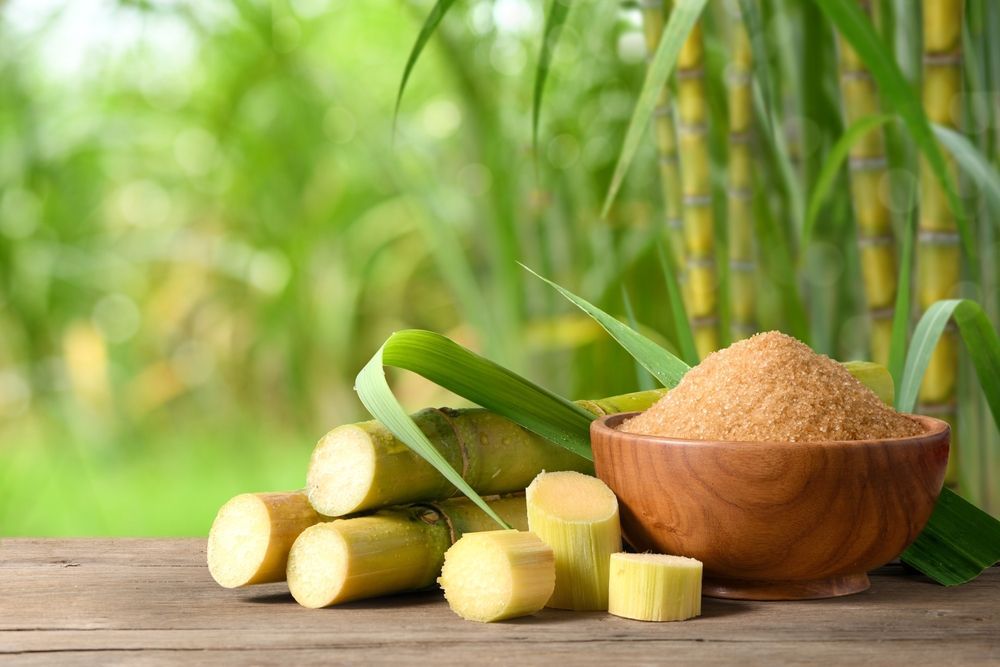Beet Sugar vs Cane Sugar: Taste Differences You Need to Know
The Ultimate Contrast: Beet Sugar vs. Cane Sugar Explained
The comparison between beet sugar and cane sugar provides a remarkable expedition of two primary sugar in the culinary world. While both sugars share a typical composition of sucrose, their beginnings, refining approaches, and taste accounts split considerably. This distinction expands past taste, influencing nutritional elements and environmental influences connected with their manufacturing - beet sugar vs cane sugar. As we navigate through these different elements, the ramifications for both producers and consumers end up being significantly evident, raising a vital question: which sugar truly preponderates in the facility landscape of sweetness?
Beginnings of Sugar Resources
The origins of sugar sources are mostly rooted in 2 distinctive plants: the sugar beet and the sugar cane. Sugar cane, an exotic yard native to Southeast Asia, has actually been cultivated for over 2,500 years.
In comparison, sugar beet is a relatively contemporary resource, established in Europe throughout the late 18th century as an action to sugar cane shortages. The plant flourishes in pleasant environments, making it ideal for growing in areas such as France and Germany. The effective removal of sugar from beetss marked a substantial farming development, as it offered a different to cane sugar, especially throughout periods of trade disturbance.
Both plants have actually played vital roles in shaping the global sugar industry. Their distinctive growth atmospheres and historical contexts illustrate the variety of sugar resources, inevitably influencing local agricultural practices and financial growth.

Handling Approaches Described
Numerous processing techniques are utilized to remove sugar from both sugar beet and sugar cane, each customized to the certain characteristics of the resource product. When it comes to sugar beetss, the procedure begins by collecting the root and after that cleaning it to remove dirt and pollutants. The beetss are then sliced into slim strips, referred to as cossettes, and subjected to warm water extraction, which dissolves the sugar. The resulting juice undergoes explanation, where lime and warm are made use of to get rid of impurities. This juice is after that focused via dissipation and formation, producing raw sugar.
Alternatively, sugar cane processing involves a different approach. The cane is harvested and mechanically squashed to extract the juice. This juice is then cleared up, commonly making use of warm and lime, to get rid of impurities. The cleared up juice is focused with dissipation, comparable to beet sugar handling, prior to condensation takes place. Both processes culminate in the production of raw sugar, which may go through further refining to accomplish the wanted pureness and top quality. Regardless of the distinctions in their preliminary handling stages, completion items are mainly comparable, leading to sugar that is chemically identical.
Nutritional Distinctions

When comparing beet sugar and cane sugar, noteworthy nutritional distinctions arise, though they are frequently subtle. Both kinds of sugar are largely made up of sucrose, offering roughly the exact same caloric web content-- about 4 calories per gram. The distinctions lie in their trace mineral content and the visibility of particular compounds that may have marginal nutritional ramifications.
Beet sugar consists of tiny quantities of calcium, iron, and potassium, while cane sugar commonly offers a little higher concentrations of these minerals. Furthermore, cane sugar might maintain more all-natural molasses during handling, which can add to trace quantities of antioxidants and other useful substances. This is especially true for less polished selections, such as raw cane sugar.
Despite these differences, both beet and cane sugars are primarily made up of basic carbs, with a high glycemic index, leading to comparable impacts on blood glucose levels. While there are small nutritional differences, the overall wellness effect of taking in either type in small amounts stays largely equal. People seeking to lessen sugar consumption for look what i found wellness reasons should take into consideration both kinds with equivalent examination, concentrating on total dietary patterns as opposed to the source of sugar
Taste Profiles Contrasted
Preference accounts of beet sugar and cane sugar display distinctive attributes that can affect their cooking applications. While both sugars are chemically similar, their flavor subtleties can influence food and drink end results. Cane sugar, commonly perceived as having an extra intricate, nuanced sweetness, is acquired from the high turf of the sugar cane plant. This variety tends to present a subtle, fruity undertone, improving the tastes of baked items and confections.
In comparison, beet sugar, extracted from sugar beetss, is known for its cleaner, a lot more simple sweetness. This high quality makes it particularly appropriate for dishes requiring a neutral artificial sweetener that allows various other tastes to beam. Some culinary experts argue that beet sugar might leave a somewhat earthy aftertaste, which can be undesirable in delicate treats.
Furthermore, the perception of sweetness intensity ranges both, with some cups recognizing cane sugar as sweeter contrasted to beet sugar at equivalent measurements. Inevitably, the choice between beet and cane sugar may depend upon the particular application, with each sugar offering unique qualities that can boost or enhance different recipes. Comprehending these distinctions enables for notified decisions in culinary practices.

Ecological Impact
The ecological effect of sugar production-- whether from beet or cane-- has garnered raising interest in current years due to its implications for sustainability and environmental health. Both sugar resources exhibit distinct environmental impacts, affected by farming methods, land usage, and resource intake.
Cane sugar manufacturing often requires big locations of tropical land, which can bring about deforestation and loss of biodiversity. Furthermore, the farming of sugarcane is frequently connected with high water use and considerable pesticide and fertilizer application, contributing to soil deterioration and water air pollution.
Conversely, beet sugar is predominantly grown in warm regions, usually requiring much less water and land. Its growing can still entail the usage of chemical inputs, affecting local communities. The energy-intensive processing of beet sugar can add to greenhouse gas emissions.
Lasting farming practices and improvements in modern technology are crucial for mitigating the environmental influences of sugar manufacturing. Organic farming techniques, integrated bug monitoring, and reliable water use can boost the sustainability of both beet and cane sugar markets, inevitably causing a reduced environmental impact and a much healthier world.
Final Thought
In summary, the contrast in between beet sugar and cane sugar highlights both similarities and visit this page distinctions that affect their application. While both kinds of sugar share a main make-up of sucrose, their flavor profiles, refining techniques, and environmental effects vary significantly. Cane sugar is defined by its complex sweet taste, while beet sugar provides a much more uncomplicated preference. Inevitably, the option in between these two sugars need to be led by specific ecological factors to consider and culinary needs, permitting educated decision-making.
The beginnings of sugar resources are mainly rooted in 2 distinct plants: the sugar beet this post and the sugar cane.Different handling techniques are utilized to draw out sugar from both sugar beet and sugar cane, each customized to the particular features of the source material.Beet sugar includes small amounts of calcium, potassium, and iron, while cane sugar commonly uses a little higher focus of these minerals.In spite of these distinctions, both beet and cane sugars are mainly composed of simple carbohydrates, with a high glycemic index, leading to comparable results on blood sugar degrees. Cane sugar, often perceived as having an extra intricate, nuanced sweet taste, is acquired from the tall grass of the sugar cane plant.